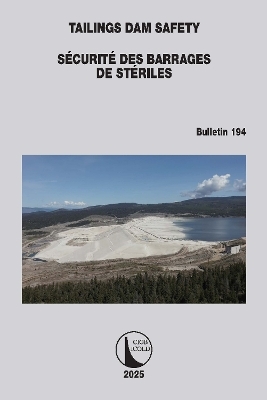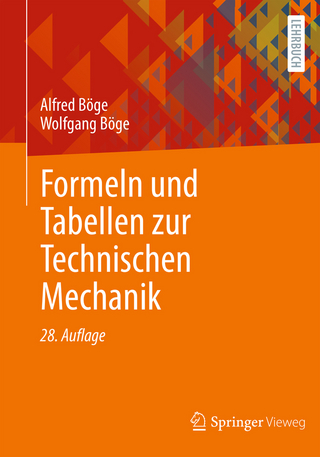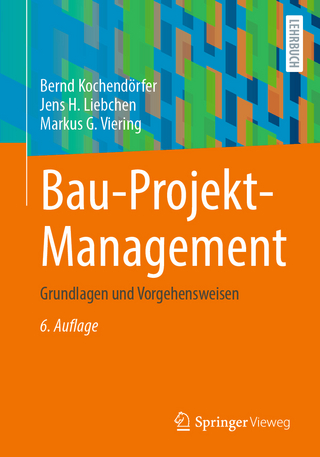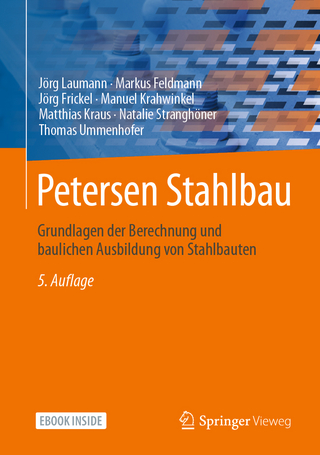
Tailings Dam Safety / Sécurité des Barrages de Stériles
CRC Press (Verlag)
978-1-032-87155-4 (ISBN)
- Noch nicht erschienen (ca. Januar 2025)
- Versandkostenfrei innerhalb Deutschlands
- Auch auf Rechnung
- Verfügbarkeit in der Filiale vor Ort prüfen
- Artikel merken
ICOLD Bulletin 194, Tailings Dam Safety, aims to assist the international community to further develop and adopt safe practices for tailings dam planning, design, construction, operation, and closure with a focus on the technical aspects that are mentioned but not fully developed in other recent National and Industry Guidelines and Standards. Governance and human aspects have also been touched on with appropriate references where other guidance documents are considered more comprehensive.
The Bulletin consolidates key information from these Guidelines and Standards together with information from various previous ICOLD Bulletins that address specific aspects of the topic to provide a comprehensive overview of “what makes a tailings dam safe.” Comprehensive references are provided to assist users to access more detailed information where relevant.
In preparing this bulletin, ICOLD has strived to consolidate “leading international practice” for tailings dams, with a focus on technical guidance.
Le sous-comité de la CIGB sur les stériles a préparé le présent bulletin pour aider la communauté internationale à améliorer les pratiques en matière de sécurité lors des phases de planification, de conception, de construction, d’exploitation et de fermeture des installations, en détaillant en particulier les aspects techniques qui ont été mentionnés, sans avoir été complètement développés, dans d’autres ouvrages directeurs et normatifs récemment publiés par des organismes gouvernementaux et industriels. Les aspects liés à la gouvernance et aux personnes ont également été abordés en offrant les références appropriées lorsque d’autres documents directeurs ont été jugés plus complets sur le sujet.
Le présent bulletin rassemble les principaux renseignements issus de ces lignes directrices et de ces normes ainsi que l’information provenant des divers bulletins antérieurs de la CIGB qui traitent d’aspects spécifiques du sujet afin de parvenir à une description complète de « ce qui assure la sécurité d’un barrage de stériles ». Des articles approfondis sont par ailleurs cités en référence pour aider le lecteur à accéder, le cas échéant, à des renseignements plus détaillés.
En préparant ce bulletin, la CIGB s’est efforcée de faire la synthèse des « meilleures pratiques internationales » mises en œuvre pour les barrages de stériles, et privilégiant les recommandations techniques.
The Commission Internationale des Grands Barrages (CIGB) / International Commission on Large Dams (ICOLD) is a non-governmental International Organization which provides a forum for the exchange of knowledge and experience in dam engineering. The Organization leads the profession in ensuring that dams are built safely, efficiently, economically, and without detrimental effects on the environment. Its original aim was to encourage advances in the planning, design, construction, operation, and maintenance of large dams and their associated civil works, by collecting and disseminating relevant information and by studying related technical questions. Since the late sixties, focus was put on subjects of current concern such as dam safety, monitoring of performance, reanalysis of older dams and spillways, effects of ageing and environmental impact. More recently, new subjects include cost studies at the planning and construction stages, harnessing international rivers, information for the public at large, and financing.
FOREWORD
PREFACE
1. INTRODUCTION
2. TAILINGS STORAGE FACILITY GOVERNANCE
3. CLOSURE
4. DAM CONSEQUENCE CLASSIFICATION
5. SITE CHARACTERIZATION
6. TAILINGS CHARACTERIZATION
7. DESIGN
8. RISK MANAGEMENT
9. DAM FAILURE / BREACH ANALYSIS
10. EMERGENCY PREPAREDNESS AND RESPONSE PLANNING
11. CONSTRUCTION
12. OPERATIONS
13. REFERENCES
14. DEFINITIONS
APPENDICES
AVANT-PROPOS
PRÉFACE
1. INTRODUCTION
2. GOUVERNANCE DES INSTALLATIONS DE STOCKAGE DES RESIDUS
3. FERMETURE
4. CLASSEMENT DES BARRAGES EN FONCTION DES CONSEQUENCES D’UNE DEFAILLANCE
5. CARACTÉRISATION DU SITE
6. CARACTÉRISATION DES RÉSIDUS
7. CONCEPTION
8. GESTION DES RISQUES
9. ANALYSE DES DÉFAILLANCES ET DES RUPTURES DE BARRAGE
10. PRÉPARATION AUX SITUATIONS D’URGENCE ET PLANIFICATION DES INTERVENTIONS
11. CONSTRUCTION
12. EXPLOITATION
13. REFERENCES
14. DÉFINITIONS
ANNEXES
| Erscheint lt. Verlag | 21.1.2025 |
|---|---|
| Reihe/Serie | ICOLD Bulletins Series |
| Verlagsort | London |
| Sprache | englisch |
| Maße | 156 x 234 mm |
| Themenwelt | Technik ► Bauwesen |
| Technik ► Elektrotechnik / Energietechnik | |
| Technik ► Umwelttechnik / Biotechnologie | |
| ISBN-10 | 1-032-87155-5 / 1032871555 |
| ISBN-13 | 978-1-032-87155-4 / 9781032871554 |
| Zustand | Neuware |
| Informationen gemäß Produktsicherheitsverordnung (GPSR) | |
| Haben Sie eine Frage zum Produkt? |
aus dem Bereich


